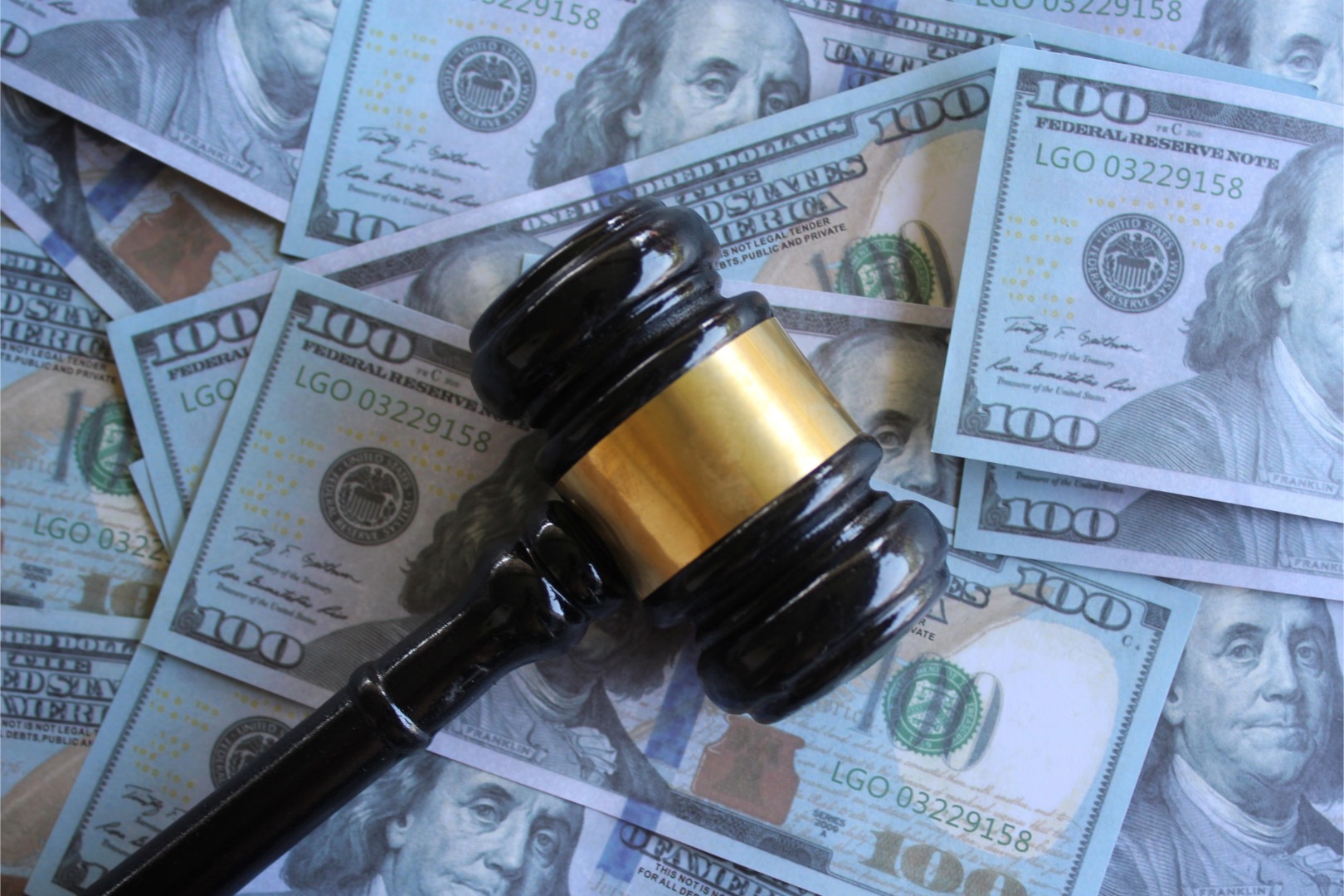
$15,880 Gone!
$13,900 Missing!
$13,540 Taken!
$17,120 Lifted!
$6,390 Pilfered!
$8,300 Borrowed!
This article is dedicated to inventors and IP practitioners who have checked their USPTO deposit accounts only to realize “we’ve been robbed!” Unlike the burglar who stealthily snuck into Steve Martin and John Candy’s motel room in Planes, Trains and Automobiles under the cloak of darkness, the USPTO absconds with patent applicants’ money in broad daylight. Here, in Part I, we investigate the USPTO’s unjust taking of fees in the above amounts for excess claims, multiple dependent claims, and other filing fees. In Part II, we investigate the extreme and, sadly, often unsuccessful measures inventors must go through to try to get their money back.
How the USPTO Collects Excess Fees for Newly Filed Utility Applications
Applicants from jurisdictions outside the United States commonly submit applications, including national stage filings of Patent Cooperation Treaty (PCT) applications, with multiple dependent claims, more than three independent claims, and/or more than 20 claims in total. Inventors are currently charged additional fees to examine these burdensome claim sets. The USPTO has proposed to increase these fees in October 2024.

Patent practitioners have questioned the need for such steep fee increases, HERE, HERE, and HERE. While the USPTO is collecting comments up to May 28, 2024, past experience indicates the agency will likely adopt their proposal, if only to fund the primary patent examiners’ upcoming 9% pay raise.
Inventors should be able to avoid paying excess and multiple dependent claim fees by:
- filing a preliminary amendment that contains a claim set formatted to conform to the USPTO’s requirements;
- checking box (b) of form PTO-1390 to pay a specified amount of fee for the minimal filing fees; or
- checking box (c)(ii) of form PTO-1390 to authorize payment of any required fee except for excess claim fees required under 37 CFR 1.492(d) and multiple dependent fees required under 37 CFR 1.492(f)

In Table 2, we show that checking these boxes and following the rules does not stop the USPTO from leveraging seemingly tiny technical and procedural situations to collect excessive excess fees. Applications I-IX are a sample of applications identified by searching Petition.ai for refund requests filed in 2022-2024.

This sample illustrates the various mechanisms by which the USPTO drains applicants’ deposit accounts of amounts that far exceed – in some instances by more than double – the reported USPTO operating costs of $6000 per patent.
- Application I – Amazingly, checking PTO-1390 box (c)(ii) on Application I’s transmittal papers did not stop the USPTO from looking into other remarks sections to justify removing $15,880 in excess claim fees from the Applicants’ deposit account. Applicant’s remarks were accompanied by a preliminary amendment to the specification updating the priority claim that stated, “all fees for entrance and consideration of this amendment made in this preliminary amendment are believed to have been paid such that no further fees are believed to be needed for the consideration of the present amendment. Nevertheless, authorization is provided herewith to charge any underpayment of fees to Deposit Account No….” (Emphasis added). The USPTO relied upon that specific authorization to broadly extract $15,880 in excess claims fees from applicant’s deposit account.
- In similar situations, the USPTO pilfered $1,600 and $340 in fees from applicant’s deposit account despite their having checked PTO-1390 box (c)(ii) in Applications II and III, respectively.
- Application IV – To allow applicants time to submit a corrective amendment, national stage applications may be filed with the bare minimum of $280 filing fees (undiscounted). Checking PTO-1390 box (b) should function to limit the amount of money taken from applicant’s deposit account to the specified minimal payment. Application IV was filed with box (b) checked; however, the USPTO took excess claim fees by leveraging a specific, separate authorization to enter an amendment to the specification:
“Applicant does not believe that any additional fee is required in connection with the submission of this document. However, if any fee is required, or if any overpayment has been made, the Commissioner is hereby authorized to charge any fees or credit any overpayment made to Deposit Account No…” (Emphasis added)
In fact, MPEP 509 permits “[a]n authorization to charge fees relating only to a specific paper, [which] could read, ‘The Director is hereby authorized to charge any fees under 37 CFR 1.16 and 1.17 which may be required by this paper to Deposit Account No…’ ” (Emphasis added)
Nonetheless, the USPTO removed $13,540 from applicant’s deposit account for excess claim and multiple dependent claim fees.
- Application V – Applicants can try to avoid surprise deposit account depletions by using a credit card to authorize payment for specific application filing fees. In Application V, the initial filing papers clearly excluded authorization for excess claim fees from their credit card payment. Applicants then provided USPTO authorization to deduct specified additional fees from a deposit account, which did not include excess or multiple dependent claim fees. Nonetheless, the USPTO broadly interpreted the authorization to remove $17,720 in fees from the deposit account for claims applicants never intended to have examined.
- Application VI – Tiny informalities can result in significant unwarranted fee payments. In Application VI, the USPTO refused entry of a preliminary amendment to reduce the claim set because the status of one of the new claims was incorrectly identified as (Original) instead of (New). Any reasonable person reviewing the accompanying remarks section, which canceled original claims 1-57 in favor of new claims 58-76, would readily understand claim 73 was, in fact, a new claim. Because the preliminary amendment was deemed unenter-able, the Office removed $13,900 from Applicant’s deposit account to pay for the excess claims and multiple dependent claims contained in the original claim set.
- Application VII – The USPTO zeroed in on an obvious typographical error in Application VII’s preliminary amendment remarks section, which did not cancel multiple dependent claim 39. Any reasonable person reviewing the entire document would have clearly understood applicant’s intent to cancel claim 39. The USPTO used that error to justify not entering the preliminary amendment and instead pocketed $6,390 for the original claims
- Application VIII – For example, the DOCX conversion process divided Application VIII’s original dependent claim 12 into three parts and nonsensically renumbered the truncated portions as dependent claim 22, independent claim 23, and independent claim 24. See Figure 3. Clearly, these are not the claims the inventor filed. In all, the seemingly innocuous DOCX conversion of line breaks (↵) into paragraph breaks (¶) throughout the claim set provided the USPTO with $8,300 in excess fees.

- Application IX – Even though the IP community was assured no fees would be charged for providing a backup, auxiliary PDF to protect a DOCX submission, the USPTO took $420 in application size fees for Application IX‘s Auxiliary PDF.
Should the USPTO continue to pick patent applicants’ pockets after the proposed fee increase, the agency’s potential haul for future filings with the same circumstances as Applications I and IV-VIII – $29,785, $28,200, $22,745, $21,205, $12,392, and $11,200, respectively – would total over $125,000.
President Biden’s administration “has made a cross-agency crackdown on what it calls junk fees a signature effort.” In fact, the Consumer Financial Protection Bureau proposed a rule change to cap credit card late fees at $8 a month.
In stark contrast, America’s Innovation Agency has proposed steep fee increases, which, coupled with their improper takings, will disproportionally impact inventors from historically underrepresented and under-resourced communities who haven’t the means to cover these expenses. As such, these policies and practices run counter to the express goals of the USPTO’s National Strategy for Inclusive Innovation.
The IP community should not support any USPTO fee increases until the USPTO stops its practice of improperly skimming unsuspecting inventor’s filing fees. In Part II, using Petition.ai, we delve into the USPTO’s petition process to see how applicants fared when requesting refunds.







